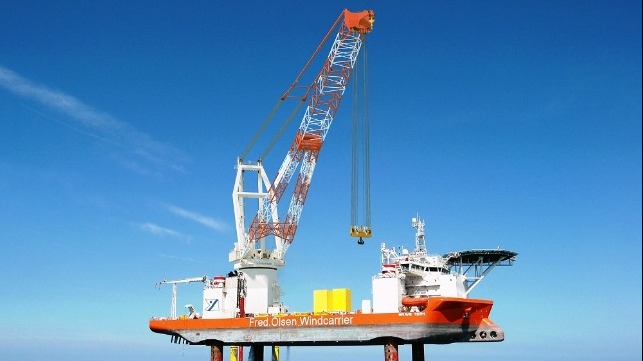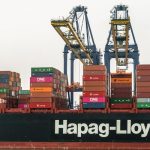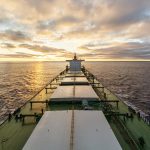In a new report, the consultancy Rystad Energy predicts that the world’s supply of offshore wind turbine installation vessels (WTIVs) and heavy lift ships is going to fall short by the middle of the decade, reflecting a coming boom in new wind farm development and the advent of ever-larger turbine designs. The finding mirrors the view of shipowner Scorpio Bulkers, which is exiting the dry bulk sector and investing in high-end WTIVs in anticipation of high future day rates.
Rystad predicts that the work demand for installation vessels in 2020 is about 8-13 vessel-years, covered by about 32 active WTIVs and 14 foundation installation vessels. This is more than enough to meet market needs in Europe at present, but global demand will likely increase fivefold by 2030, the company predicts. (Rystad excluded China from the analysis, since Chinese developers are expected to source their vessels and services from the domestic market.)
As Scorpio Bulkers has also predicted, the vessel shortfall will be most acutely felt for projects that use the latest ultra-large turbines, like GE’s massive Haliade-X. Only four WTIVs in the world can handle these 800-foot giants, and future commercial-scale projects generally favor the largest turbine classes in order to keep down cost per kilowatt of capacity. GE’s competitors are planning even bigger turbines in an arms race that shows no sign of slowing.
“We identify the heavy-lift vessel segment as the key bottleneck for offshore wind development from the middle of this decade, and the need for next generation vessels may slow the cost reductions expected in offshore wind,” said Alexander Fløtre, Rystad Energy’s product manager for offshore wind.
The procurement prices for turbines and foundations (jackets or monopiles) account for the biggest costs for a wind farm, but the installation work is also capital intensive. It can consume about 20-30 percent of the total project cost, according to Rystad – up to a billion dollars for a 100-turbine, one-gigawatt project. With about 5-9 vessel-days of work and standby time per turbine, and with a WTIV day rate exceeding $200,000, the revenue opportunity for shipowners adds up quickly.
“Looking ahead, vessels will have to serve the initial construction phase of projects, in addition to maintaining and periodically replacing the active base of equipment. The segment that will succeed in serving the future needs of the offshore wind industry will be able to offer this valuable synergy to support a healthy fleet utilization,” Fløtre said.
Source: Maritime Executive






